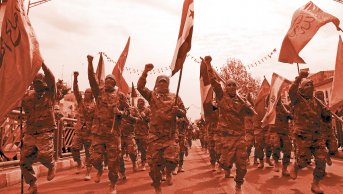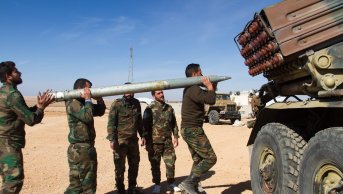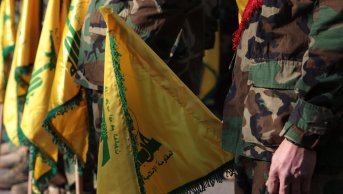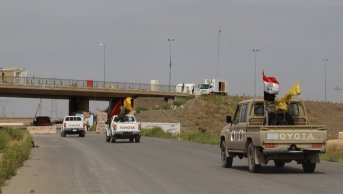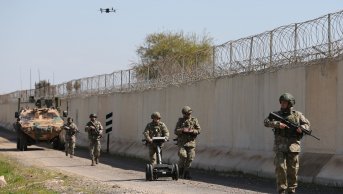ISIS Revives in The Syrian Desert
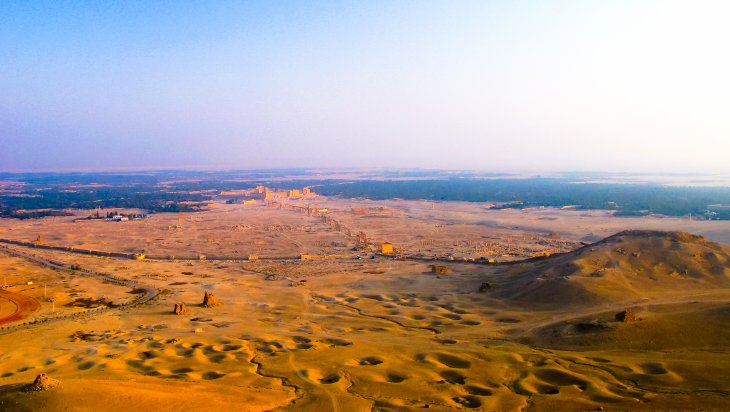
In the period after the fall of Baghuz, assertive but unrealistic expectations were expressed that ISIS, whose territorial control ended in Syria, was defeated and that it was coming to an end. The organization suffered defeats on the field between 2007 and 2011, as well as losses from its leadership staff. The terror group, which gathered strength by retreating to the countryside and underground at that time, is following the same path nowadays. The audio recording of Abu Mohammad al-Adnani, the former spokesperson of the organization, released in May 2016 contained clues about this process. Adnani stated that they did not lose the war when they lost their leading commanders and cities in Iraq and retreated to the desert and that, even if they lost all cities, especially Mosul, Sirte, and Raqqa, this war would continue. In the same statement, Adnani signaled that the organization would continue its activities "without dominating the area and retreating to the desert" as it was in the past. In the first months of 2019, after the fall of Baghuz, while the transformation of ISIS's style of action continues in parallel with the aforementioned scenario, the existence of Syrian factors that facilitate this transformation of ISIS stands out in Syria.
Considering the actions of ISIS after losing its territorial control in Syria, it can be seen that it mostly targets regime and pro-regime factions. The reasons for this are the lower return of attacks against the US-backed YPG/SDF as well as the fact that ISIS prefers desert areas as a spreading area in the medium term. Even if Deir ez-Zor city center is targeted by terrorist acts, it does not offer secure haven conditions as much as desert areas. ISIS's experience in deployment and shelter in desert regions, including Iraq, made the desert and its surroundings the target of the post-space domination era for the organization. As a result, in the period from April 2019 to January 2021, the Deir ez-Zor and Homs rural areas were the most targeted regions in ISIS actions. According to the data compiled by Gregory Waters, most of the attacks which ISIS has committed in the last two years was in these two provinces, except December 2020[1]. While 101 of the 397 attacks reported between April 2019 and January 2021 took place in the rural areas of Hama, Raqqa, and Aleppo, 3 out of every 4 attacks took place on the Homs-Deir ez-Zor line.[2]
In the country, where 30 or more attacks have been carried out monthly since July, the regions that are most intensely targeted by attacks and conflicts during this period appear to be Mayadin, Shoula, Kabajeb, Doubayat Valley, Sukhnah, Ithriya, Tadmur, and Resafa. In the attacks carried out by hidden ISIS cells stationed in the region, many different pro-regime militia structures were targeted, especially local militias. By August 2020, ISIS had targeted Russian soldiers along with the Liwa al-Quds militia in the Homs countryside and Mayadin. The momentum captured by large-scale raids and ambushes, from which Liwa al-Quds and Russia had casualties at the command level, continued without slowing down.[3] Raids against a single target by infiltrating the inner parts of the regime lines, simultaneous attacks on multiple targets, firing on the highway between Deir ez-Zor-Tadmur and Ithriya-Sukhnah, targeting military convoys and groups with attacks using IEDs, attacks on regime checkpoints and ambushing the regime's vehicles and convoys by setting up false checkpoints constitute ISIS's military strategies in the Syrian operation.
On these attacks, the National Defense Forces (NDF), the Syrian Regime Army (SAA), Liwa Fatemiyoun, Liwa al-Quds, the Republican Guard, Russian mercenaries, and local militia forces suffered casualties. The fact that the geographical conditions of the region are compelling for a continuous defense or attack plays a role in the inability to stop ISIS and in the size of these casualties. While the low-population structure of the region between Mayadin-Resafa-Ithriya-Tedmur, consisting of deserts and hills, is quite suitable for the survival of the region structured by ISIS through small cells, it is also very unfavorable for the activities of regime elements with limited experience of guerrilla warfare. It seems clear that the terror group, which has a 15-year tradition of desert deployment in Iraq, has analyzed the desert regions of Syria for a possible collapse scenario and turned it into a large haven for itself during its years in Syria. The organization, which inflicts serious casualties on regime elements in the desert with low-cost attacks, is gathering strength for new attacks with very few casualties due to the structure of the geography, and can be compared to the more costly counter-attacks of the regime.
While using the advantages of geography in Syria, ISIS overcame the obstacles created by its disadvantages. Because the loss of territorial domination also means that the financial power will take a hint, this situation forced ISIS to have more efficiency with less cost. ISIS's solution to this problem was to increase the destructive power of each action with more coordinated and targeted attacks. The increase in the intensity of the attacks with high damaging power within the average means that ISIS will cost the regime the most with the least resources. The priority of the regime, which is already experiencing a major economic collapse, is not to overcome the new costs calculated by ISIS. Therefore, this activity of ISIS means new costs to be paid for by Iran and Russia, which are also in competition with each other in the region, in order not to fall behind in the competition. While the multi-part structure of the regime elements makes a central command difficult, their lack of coordination also opens up space for ISIS. Many events, such as the differences of opinion between the regime army and the NDF, provide time for ISIS to maneuver.[4] ISIS is trying to inflame the conflict between the PKK-backed YPG/SDF and local Arab-linked groups in the Deir ez-Zor region and the discontent among the people of the region.
It is known that most of the Syrian regime army is limited in terms of both capacity and function, except for the 5th Corps, which Russia used and equipped to strengthen its influence in southern Syria. To reduce the intelligence weaknesses, the constant deployment of thousands of military elements at the checkpoints established throughout the country causes the regime to have a human resource problem when it comes to the military element that will take the field. While the militias other than the regime army forces cannot exceed a certain level in terms of both capacity and function, they also experience problems with local people in some regions with their unlawful practices, thus preparing the ground for possible cooperation of local elements with ISIS. In the final analysis, although the desert mobility of ISIS which has been continuing increasingly for the last two years shows periodic slowdowns it will continue similarly for a while due to the fragmented structure of the pro-regime elements and their low-capacity of military assets.

